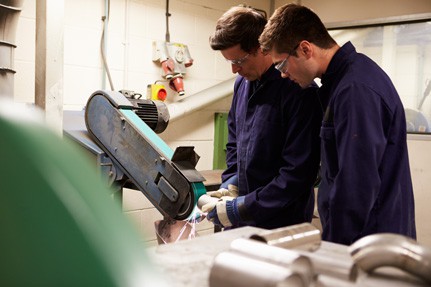First of all, let’s define what a linisher is. A linisher, also known as a belt grinder, is a type of power tool that uses a belt to sand, grind, or shape various materials such as metal, wood, and plastics. This tool is commonly used in metalworking and woodworking industries, and it can be a very powerful and useful tool if used correctly.
However, with great power comes great responsibility, and it is important to understand the potential dangers associated with using a linisher. Accidents can happen, and they can be severe and life-altering. That’s why it is crucial to take the necessary safety precautions to avoid injuries and accidents when using a linisher.
So, what are some of the dangers associated with using a linisher? Well, there are several. First of all, the abrasive belts used on the linisher can cause severe injuries if they come into contact with skin or clothing. These belts can easily grab onto loose clothing, hair, or jewellery, and pull the operator’s hand or fingers into the machine. This can result in serious cuts, lacerations, or even amputations.
Another danger associated with linishers is the risk of eye injuries. When using a linisher, debris and sparks can fly off the machine and into the operator’s eyes, causing eye injuries or even blindness. It is important to wear safety glasses or goggles at all times when using a linisher to protect your eyes.
In addition, the noise level generated by a linisher can be very high, and prolonged exposure to high noise levels can lead to hearing damage or loss. It is important to wear hearing protection, such as earplugs or earmuffs, when using a linisher for an extended period of time.
So, what are some of the safety recommendations when it comes to using a linisher? Let’s take a look.
First and foremost, it is important to wear the appropriate personal protective equipment (PPE) when using a linisher. This includes safety glasses or goggles, hearing protection, gloves, and a dust mask. Make sure that all PPE fits properly and is in good condition before using the machine.
It is also important to make sure that the linisher is properly maintained and inspected before each use. Check the machine for any loose or damaged parts, and replace any worn belts or wheels. Make sure that the machine is properly grounded and that the power supply is in good condition.
When using a linisher, always keep your hands and fingers away from the abrasive belt. Use the machine’s table or rest to guide the material being worked on, and never try to hold the material by hand. This will help to prevent your fingers from getting caught in the machine.
In addition, always be aware of your surroundings when using a linisher. Make sure that there is enough clearance around the machine and that there are no obstructions or trip hazards in the area. If possible, use the machine in a designated work area that is separate from other workers and equipment.
Finally, it is important to receive proper training before using a linisher. This includes learning how to operate the machine safely, how to maintain and inspect the machine, and what to do in case of an emergency. If you are unsure about how to use a linisher safely, ask a supervisor or trainer for help.
In conclusion, working with a linisher can be a very powerful and useful tool, but it is important to take the necessary safety precautions to avoid accidents and injuries. Always wear the appropriate PPE, maintain and inspect the machine before each use,
![]()






